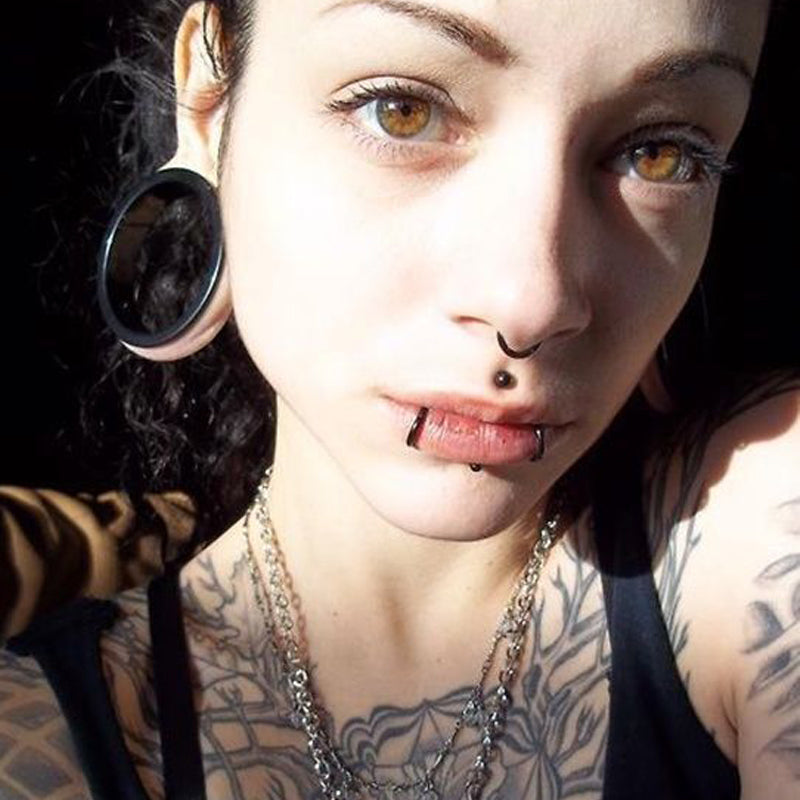
Stay Warned! Know the Dangers Associated With Septum Piercing
Septum piercing can lead to a condition called nasal septal hematoma, which if left untreated, can cause a hole to form at the location. To know more about this piercing and the various risks associated with it, read this Ouferbodyjewelry post.
Septum piercing falls in the category of nose piercing. Nose piercings, in general, involve piercing of the skin as well as the cartilage of any part of the nose. Out of all types of nose piercings, the most common and popular choice is septum piercing. In fact, it is rapidly gaining popularity in recent times. However, any kind of piercing involves certain risks, and so, is the case with this piercing.
The Location
The septum or the nasal septum is the cartilaginous wall that divides the two nostrils. The cartilage is usually not pierced. It is the thin strip of very soft and flexible skin, just between the cartilage and the bottom of the nose, where septum piercing is mostly done. Piercing the skin instead of the cartilage can greatly minimize the pain, as well as other discomforts associated with this type of piercing. It can be done with a needle or gun. As far as jewelry is concerned, you can use captive bead rings, circular barbells, plugs, tusks, curls, and septum retainer.
Risks Involved
All types of body piercings are associated with the risk of contracting certain blood-borne diseases like hepatitis, from the needles and piercing guns used in the procedure. This risk can be avoided by getting the piercing done by a reputed piercer and making sure that the piercer uses only sterile single-use needles.
◆ The next common risk is infection and pain. This can be minimized greatly if the piercing is done on the soft, flexible skin that lies between the cartilage and bottom of the nose. As far as infection risks are concerned, it can be managed with proper aftercare.
◆ This piercing can sometimes lead to nasal septal hematoma. An injury to the soft tissue within the septum can disrupt the blood vessels to cause the accumulation of blood and fluid under the lining. Nasal septum hematoma can eventually cause nasal congestion, and interfere with breathing along with causing pain and inflammation. If not treated immediately, the condition can ultimately cause formation of a hole in the septum, leading to nasal congestion. Sometimes, that part of the nose may collapse, resulting in a cosmetic deformity, known as 'saddle nose'.
Aftercare Instructions
It takes about 1 to 3 months for the piercing to heal completely. The most important part is regular cleaning of the piercing and the area around it.
◆ You can clean the piercing twice daily with the help of an antibacterial soap.
◆ Use a cotton ball soaked in water to wet the piercing.
◆ Then take a few drops of antibacterial soap on your hand and work on a lather.
◆ Apply this to the piercing and gently rotate the jewelry so that the soap can get into the piercing hole.
◆ Also, try to loosen up and remove any crusting with the help of the cotton ball.
◆ Let the piercing soak for about 2 to 3 minutes, after which rinse off the soap with plain and clean water.
◆ After cleaning, do not forget to dry the piercing with a clean tissue. Towels should be avoided for drying a fresh piercing, as they can not only harbor infectious agents like, bacteria, but can also pull the jewelry or irritate the piercing.
◆ Do not use table or Epsom salt, hydrogen peroxide, betadine, methylated spirit, or Neosporin on the piercing.
◆ Along with proper cleaning, be sure to avoid touching the jewelry or the piercing with unwashed hand.
◆ Also do not remove the jewelry until the piercing has healed completely and avoid irritating the piercing during this period.
Before opting for this piercing, it is better to do some preliminary research about this piercing, weigh its various pros and cons and finally have a discussion with an expert professional, in order to get a better understanding about piercing aftercare. A properly done piercing can significantly reduce the possible risks associated with the procedure. After the piercing, if you observe any signs of serious infection such as, increased swelling, pain, redness, or unusual discharge, make sure to visit your physician as soon as possible.



1 comment
You NEVER turn a new piercing. And you don’t wet with water—it isn’t sterile.
You only use pressurized sterile saline, and if you need to get crusties off soak sterile gauze with the saline and hold it in the area to soften them, and gently wipe off.
Melissa
Leave a comment
This site is protected by hCaptcha and the hCaptcha Privacy Policy and Terms of Service apply.